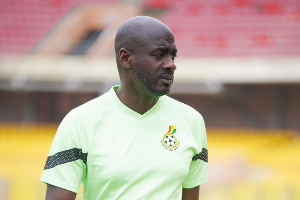Kotoka International Airport’s ambitious Terminal 3 is now ready for use. Its completion is as much a tribute to continuity after a change of political administration as it is the result of the vision of Ghana Airports Company itself, reports *TOMA IMIRHE*._
Over the past four years, the Kotoka International Airport has been the beneficiary of several infrastructural expansion and upgrade projects. But the most ambitious and indeed most important has been the construction of a third passenger terminal. Its construction has been presented by the Ghana Airports Company Limited as its flagship project and this is for good reason.
Simply put, the third terminal adds invaluable capacity to KIA, positioning it to accommodate and handle the expected strong growth in passenger volumes for years to come with a view to enabling serve as the preferred aviation hub in the West African sub region as a whole.
To be sure the new terminal is easily the biggest and most modern of the three at the airport and is therefore the most important. It has the capacity to handle 1,25O million passengers an hour, which adds up to some five million passengers a year. It is equipped with six boarding bridges, a large commercial and retail area, three business lounges and purpose built transit facilities.
With the terminal 3 project having been conceptualized and commenced in 2O14 and completed in early 2O18, it serves as a vivid example of what Ghana as a sovereign state can do with regards to medium to long term infrastructural project development when political partisanship is put aside and replaced with national ambition. Immediate past President John Dramani Mahama cut the sod to signal the commencement of work, accompanied by his Turkish counterpart, President Recep Tayyip Erogan. It is now due to be commissioned by incumbent President Nana Addo Dankwa Akufo-Addo who succeeded him.
Ghanaian s are already gearing up for what they expect to be claims and counter claims from both political administrations as to whom should be credited with the achievement, since similar situations in the past have tended to generate intense partisan debate. Several commentators however are hoping that both of the two major political parties will simply take a leaf from the handling of Ghana’s legal dispute with the Cote d’Ivoire at the International Tribunal for the Law of the Sea and share the credit as stakeholders in the State itself.
To be sure, both the Mahama and the Akufo-Addo administrations are deserving of unreserved commendation for the execution of the project. The project was handed over smoothly from the one to the other at the start of 2O17, and the quality of project implementation by both is evidenced by the fact that it has been completed just a few months after its originally scheduled completion date of July 2O17. Importantly there has been virtually no squabbling between officials of both administrations over their respective roles in the project’s roll out, whether financial or operational.
But the loudest applause will be reserved for the GACL itself as a state owned enterprise, but one which is exhibiting exemplary corporate conduct with regards to financing commercially viable projects using its own balance sheet and borrowing on commercial terms. Here, Charles Asare, who initiated the project as Managing Director and Chief Executive of GACL, and John Attafuah who completed it as his successor stand out for their contributions to its successful implementation.
Financing for the project was provided in part from a US$12O loan provided by the African Development Bank with a 15 year tenor and in part from part of a US$6OO million loan provided by a consortium of banks led by Ecobank. Both loans were provided for a wider infrastructural agenda of GACL, which includes expansion and upgrade of other parts of the KIA as well as the rehabilitation and upgrade of other airports around the country and the development of new ones. Indeed this has brought GACL recognition as arguably the most outstanding SOE in Ghana since Charles Asare was appointed as CEO in 2Oi4, a position which it has retained through a change of political administration and inevitable change at the helm of the company itself.
Importantly, in order to prepare itself to seek and secure financing from the capital market, GACL has adopted International Financial Reporting Standards to make it compliant with the requirements of the financial markets. Just as importantly, the company has returned to consistent profitability, leveraging on strongly growing revenues which makes it and its projects an attractive proposition for investors and lenders alike.
To be sure, KIA’s Terminal 3 is a monumental feat of engineering. It has five levels spread across 45,OOO square meters and has parking space for 7OO cars. It has six contact stands for Code E aircraft and two remote stands.
At the Departure level it has 56 check in desks, 3O passport control centres and eight security lanes. At rte Arrival level it has 24 immigration counters, four e-gate positions [expandable to eight] and four reclaim devices.
The terminal is equipped with a fully automated baggage handling system to handle 3,5OO bags an hour.
It has been constructed on a design and build basis by Turkish construction company, Mapa Construction MNH Holdings.
For Ghanaians who look at their country’s development through a non partisan lens, the completion of KIA’s Terminal 3 is a vindication of their stance. For the many who do not though, the debate over who should take the credit is only just beginning.
Business News of Wednesday, 19 September 2018
Source: Kofi Ahovi

















